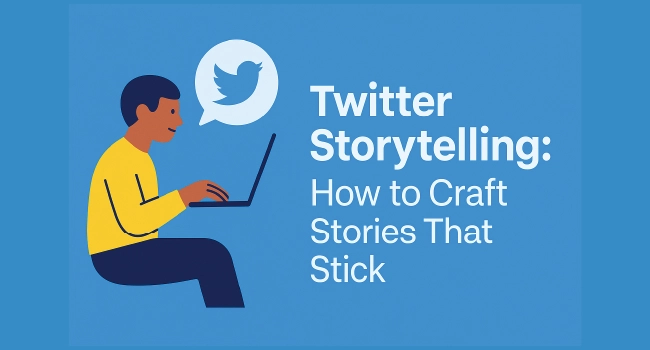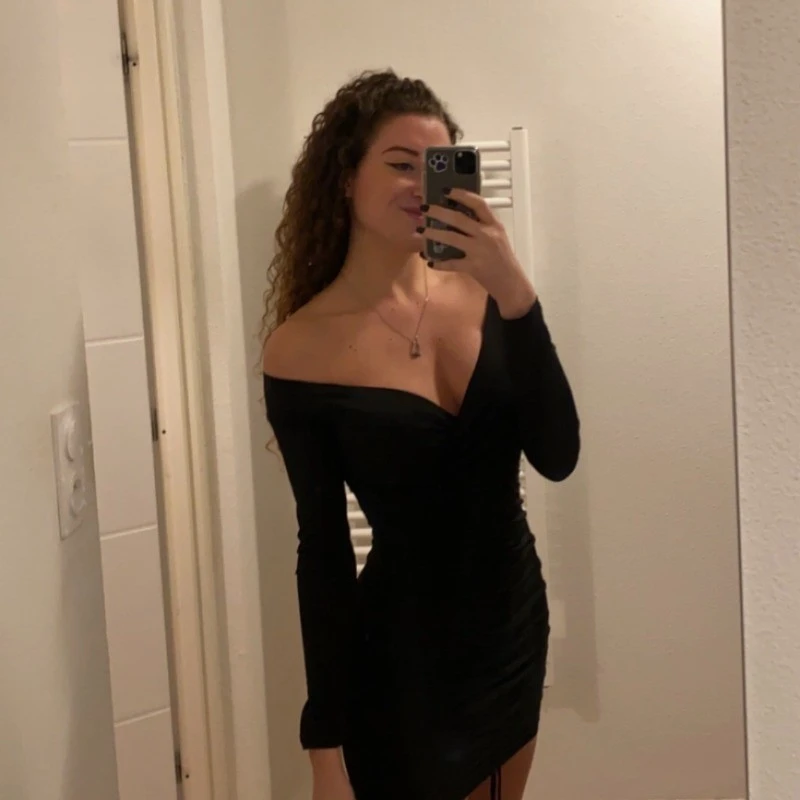Twitter storytelling has become one of the most powerful ways to connect with people online. Instead of posting random thoughts, you can share a story that pulls readers in, keeps them curious, and leaves them wanting more.
On X, stories come in many forms: short threads, long posts, or even quick videos that pack an emotional punch. Each format offers a chance to teach, entertain, or inspire. In this guide, we’ll walk through the methods that actually work. You’ll see examples, proven tips, and simple steps you can follow to tell better stories and grow your presence.

What Twitter Storytelling Means Today
Twitter storytelling is about making people feel connected to your words. In 2025, stories on X tend to follow patterns that keep readers hooked. Instead of short one-off posts, creators now lean into arcs, character-driven moments, and emotional payoffs.
Here's what stands out today:
-
Relatable journeys – People respond when you show progress, mistakes, and wins in your own voice.
-
Clear structure – Strong stories have a beginning, middle, and end, even in short formats.
-
Emotional pull – Curiosity, humor, and even conflict keep readers scrolling.
-
Visual support – Images, GIFs, and quick clips amplify the impact of words.
-
Consistency – Accounts that weave stories regularly build trust and long-term followers.
The shift is clear: instead of shouting into the void, you can now use storytelling on Twitter to build genuine bonds with your audience.
Threads vs. Long Posts vs. Video – When Each Format Wins
Not every story fits the same box. The trick is knowing which format makes your message stronger. Twitter storytelling works best when you match the story to the medium.
-
Threads: Choose this format when you want to build suspense, break down steps, or guide readers through a process. A thread lets you pace the story and invite replies along the way.
-
Long posts: These shine when you need depth. Thought leadership, detailed case studies, or personal essays all benefit from being in one seamless piece instead of scattered tweets.
-
Video: Use this when tone and emotion matter. A 60-second clip showing your face, voice, and expressions often communicates more power than text.
-
Spaces (Live audio): Great for community-driven storytelling. You can host conversations, invite guest voices, and recap the highlights in follow-up posts.
| Your Goal | Best Format | Why It Works |
|---|---|---|
| Teach or explain a process | Thread | Keeps attention step by step |
| Share personal insight | Long post | Offers depth and clarity |
| Create emotional impact | Video | Humanizes your story |
| Build community dialogue | Spaces | Real-time storytelling |
By picking the right format, you make sure your story not only gets seen but also remembered.
Narrative Frameworks for Twitter Storytelling
Great stories follow patterns that make them easy to read and hard to forget. On X, you can use simple frameworks to turn any idea into a narrative that sticks.
Here are a few you can start using:
-
Three-Act Arc – Begin with a setup, build tension, and finish with a clear payoff. This keeps readers scrolling to the end.
-
Problem → Proof → Payoff – Share a challenge, show evidence or examples, and close with the solution or lesson learned.
-
Open Loop Serial – Tease an answer or result early, then explain it step by step before revealing the full payoff.
-
Personal Journey – Walk readers through your growth, failures, and wins. People love to see progress.
These frameworks act as simple guides you can adapt to any topic. They give your ideas shape, help you pace your story, and make your Twitter storytelling flow in a way that feels natural and engaging.
Hooks That Stop the Scroll

A story only works if people actually stop to read it. That's why your hook, the very first line, matters most in Twitter storytelling. A strong hook sparks curiosity, promises value, or raises a question your audience wants answered.
Here are a few styles that work well:
-
Curiosity hook: "Most people overlook this tiny feature on X, but it can double your reach."
-
Challenge hook: "If you can't explain your idea in one tweet, you don't understand it well enough."
-
Number hook: "Here are 7 simple story arcs that always work on X."
-
Personal hook: "I failed three times before finding a storytelling style that clicked."
-
Open loop: "I tried something new for 30 days, and the results surprised me…"
Proof Blocks & Visuals That Deepen Stories
Words set the stage, but visuals and proof make your story unforgettable. In Twitter storytelling, adding the right evidence builds trust and keeps readers engaged.
What Proof Blocks Look Like
-
Screenshots – Show real results, conversations, or charts instead of just describing them.
-
Quotes or stats – Back up your point with data or a short testimonial.
-
Mini case studies – Share before-and-after moments that highlight the change.
How Visuals Boost Impact
-
Images and GIFs grab attention and break up text-heavy posts.
-
Carousels can highlight steps, frameworks, or comparisons in a swipeable way.
-
Short videos add tone and personality, making your story feel more human.
Sometimes the best inspiration for quick proof lines or captions comes from places you don't expect. Looking at things like Twitter bios can spark short, catchy phrases that slide perfectly into a story or visual post.
Real Tweet Examples That Nail Twitter Storytelling
Interactive Choose-Your-Own-Adventure Thread – Spotify Indonesia
Spotify Indonesia used a "scenario thread" to launch new podcast series, asking readers to make choices at key moments, similar to a choose‑your‑own‑adventure game.
This format engaged users and led directly to the podcast's storytelling experience. It earned a massive 11.5 million impressions in one day, with 236,000 total engagements and higher brand mentions.
Why it works:
-
Hook: The prologue with a GIF teases mystery.
-
Narrative mechanic: Choices at each tweet let the audience drive the story.
-
Visuals: GIFs bring mood and immediacy.
-
Outcome: Huge reach, engagement, and brand lift.
Metaverse Noir – Interactive Fiction by @MetaverseNoir
This award-winning thread created by Kathryn Yu is a fully interactive noir story set in the metaverse. It starts with a "START HERE" tweet that drops you into a detective narrative.
You follow the thread and make choices along the way, just like a mini-game in tweets. That approach earned coverage from WIRED and brought Yu over 500 followers.
Why it works:
-
Hook: Engaging noir setup in just a few lines.
-
Structure: Branching narrative keeps readers invested.
-
Voice: Cinematic tone, vivid imagery.
-
Creative risk: Showcases what’s possible within Twitter’s 280-character constraint.
How These Examples Apply the Principles
| Principle | Spotify Indonesia (Scenario Thread) | Metaverse Noir (Interactive Fiction) |
|---|---|---|
| Hook | GIF teaser with high stakes draws readers in immediately. | Noir mystery hook (“START HERE”) triggers curiosity instantly. |
| Narrative Structure | Branch points let users decide what happens next game-like engagement. | Branching storyline with choice paths makes readers active participants. |
| Visual + Emotional Pull | GIFs create atmosphere and visual break, amplifying the narrative. | Vivid crime-scene imagery and noir tone heighten immersion. |
| Engagement & Reach | Massive metrics demonstrate how interactive storytelling can go viral. | Coverage and follower jump show creative format’s impact. |
Implementation Checklist
Use this quick checklist whenever you want to share a story on X. It keeps things simple and makes sure nothing slips through.
1. Pick your story
Choose a lesson, journey, or moment that feels worth telling.
2. Craft the hook
Write a bold claim, a question, or a short scene to spark curiosity.
3. Shape the arc
Give your story a clear beginning, middle, and end with one of the simple frameworks.
4. Add proof and visuals
Use screenshots, stats, images, or clips to back up your words.
5. Make it accessible
Add ALT text for images, captions for videos, and break text into small chunks.
6. Post at the right time
Share when your audience is most active to increase reach.
7. Measure results
Look at replies, profile clicks, saves, and quote posts, not just likes.
8. Refine and repeat
Keep what works, adjust what doesn't, and grow over time.
This checklist turns storytelling into a habit. Follow the flow, and you'll always have a clear path from idea to published post.
Conclusion
Strong stories turn casual readers into loyal followers. With solid storytelling on Twitter, every post becomes a chance to build moments that stick and create real connections. From hooks that spark curiosity to visuals that add proof, every detail shapes how people feel about your words.
Now it’s your turn. Take one of the frameworks, test a hook, or share a small journey today. Each story you tell helps you connect a little deeper with your audience. Start simple, keep refining, and watch your reach grow one story at a time.
FAQs | Frequently Asked Questions |
How often should I use storytelling on X?
You don’t need to weave a story into every post. Aim for one to three storytelling pieces each week, balanced with shorter updates or quick tips. This keeps your feed dynamic while still building a strong narrative style.
Can storytelling help me grow followers faster
Yes. Stories are more likely to get shared, bookmarked, or quoted. These signals expose you to new audiences, which naturally leads to follower growth over time.
How do I avoid losing readers mid-story?
Use strong hooks, short paragraphs, and add visuals to break up the flow. End each tweet in a thread with a small cliffhanger to keep people scrolling.
What mistakes should I avoid in Twitter storytelling?
Don’t overload your posts with jargon or unnecessary detail. Keep the story simple, focused, and supported with visuals when needed.

